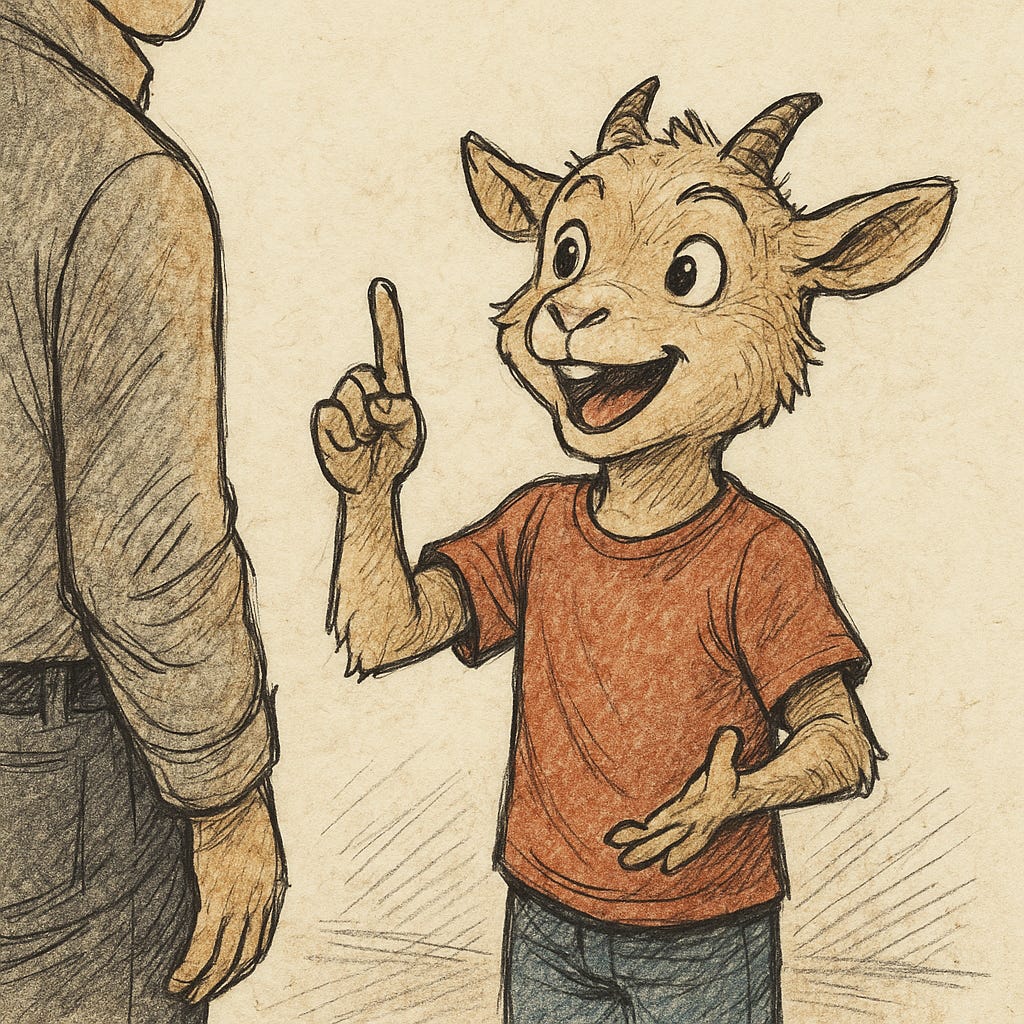The word confabulation comes from Latin, but you can probably figure out a lot of its etymology without knowing a single Latin word.
Well, okay—it probably helps to know con, which just means “with.” I bet you can see that the second part of the word resembles the English word fable, so you probably understand that confabulation means something akin to with a story.
Today, we use another similar word: conversation. Conversing means talking and listening, taking turns with one another. Confabulation takes it just a step further and implies that stories are being exchanged.
These stories are often made up from whole cloth, but they can also be retellings of other events that have really happened. Today, confabulation is most commonly used as a medical term for people with dementia, who will frequently make up stories to protect their own identity, so their personal narrative makes sense.
This particular type of confabulation is useful, in other words. Understanding this made me curious as to what other types of confabulation might also have surprising benefits.
If convincing yourself something is true helps you navigate through your day, as in the case with persistent memory loss, I wondered: could making up stories actually be a feature instead of a bug?
Spoiler: sometimes.
Remember all those lies we tell to children?
As kids get older, they need different useful lies. Is it okay to tell a seven year old that if they take someone else’s meds, they’ll feel bad, even if that might not be true? It’s tough to explain the idea of long-term psychological addiction to a child, or that their physiology might be a bit different due to a slight difference in hormone balance.
This makes sense, but what about kids making up their own stories and then sharing them as though they’re true? This can obviously be really dangerous, but there’s a good reason adults don’t trust five year old kids: they make stuff up all the time.
Personally, I think this can be explained (at least in part) by practicing for being an adult. A kid badly wants to be a part of the grownup conversation, and they know there needs to be a certain amount of information exchanged by both sides. Kids simply prioritize this desire to exchange roughly equal amounts of info higher than they prioritize telling the truth.
There’s also another way confabulation prepares kids for the “adult” world, whatever that means. Making up stories gives your imagination the chance to run wild.
Imagination and confabulation means kids are conceiving of scenarios they’ve never encountered before. We’re role-playing for a future that probably won’t happen, but the skills we develop along the way seem to come in handy. If you’ve thought about a fire-breathing dragon that can melt steel in an instant, you might not be shocked to learn about nuclear fusion, for example.
Some of these kids grow up to become sci-fi or fantasy writers. That vivid storytelling gets developed at a very early age, and these folks just never stop making up stories. Isaac Asimov felt like he had to write nonstop, almost like a compulsion, and this practice certainly began in childhood.
Some of these great confabulators will weave a tale that gives a real-world scientist or entrepreneur an idea, and they’ll run with it and make it real. Others become world-changing scientists themselves, like Einstein or Feynman.
The funny thing is that even if these stories don’t have any basis in reality, they can still be incredibly helpful. Why? I think it’s because they ask important questions nobody else is asking.
Today, we can get an instant answer to almost literally any question we have. 20 years ago, if you asked me if I knew the answer to something, I might say no if it wasn’t readily available in my mind. Today, if you ask whether I know something, I might as well say yes if all I have to do is a ten-second search.
The point is that asking good questions is where the real value lies.
Good questions can and should come from a variety of angles. You want to make sure you cover all aspects of a situation, not just whatever area feels most comfortable for you. Here is where imagination comes in handy.
Imagination is only half of the puzzle, though. To complete the picture, you need to have belief. Believing gives you the courage of your convictions, so you allow your own mind to follow rabbit holes to see where things will go.
Disbelief, by contrast, can really get in the way of imagination if you’re a kid.
Hopefully, by the time you’re an adult, you move past the need to believe the stories you make up in order for them to feel vivid and real. You still get the usefulness of the thought experiment this way. You don’t have to throw out the diamonds with the doodypoop.
Since answers are cheap, questions are now much more valuable by comparison. It’s not about looking up facts, so much as it is about using our imagination to come up with the right questions to ask.






Watching Christine McVie made my eyes fill up… I loved her. 💙🥹